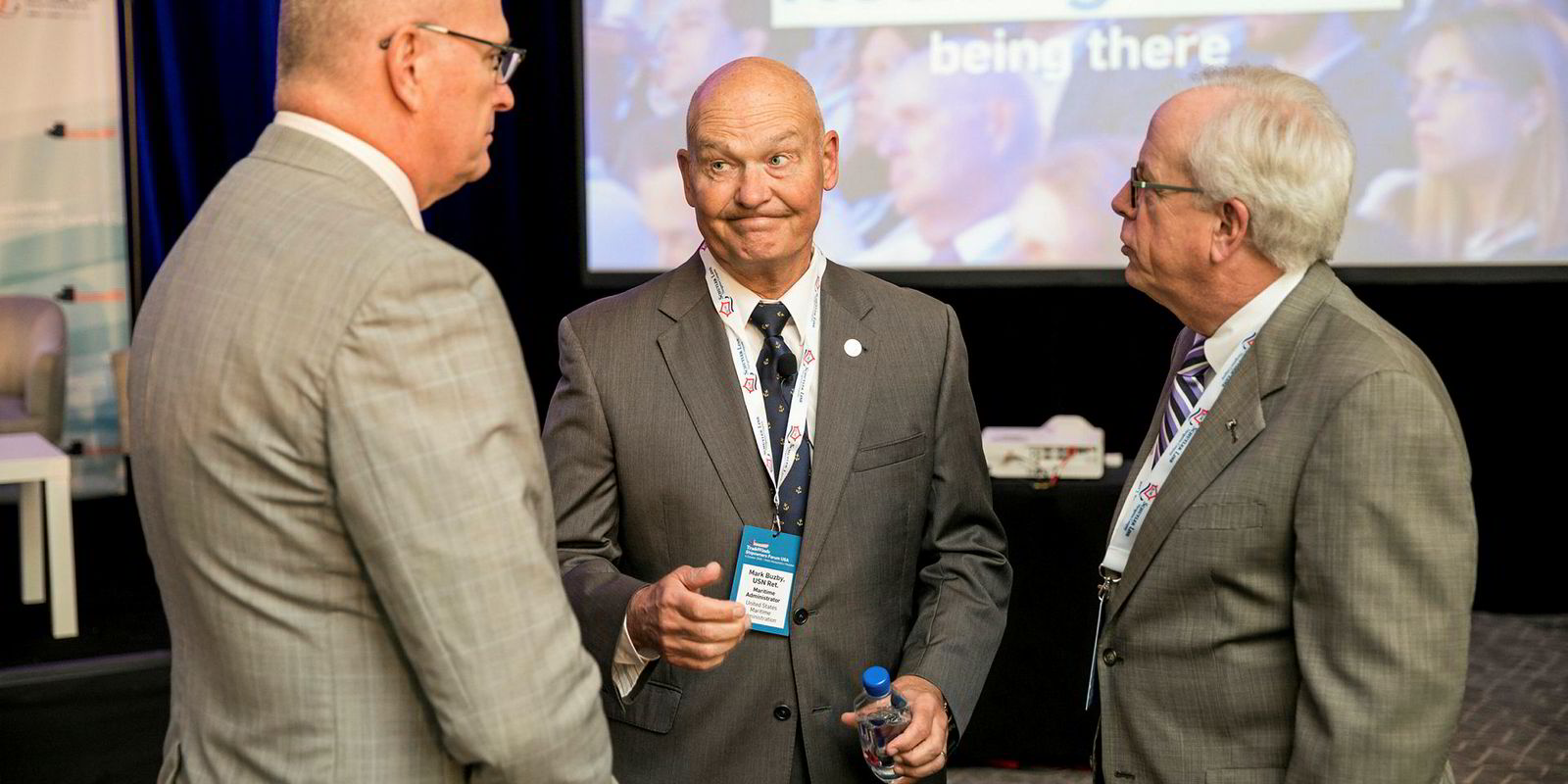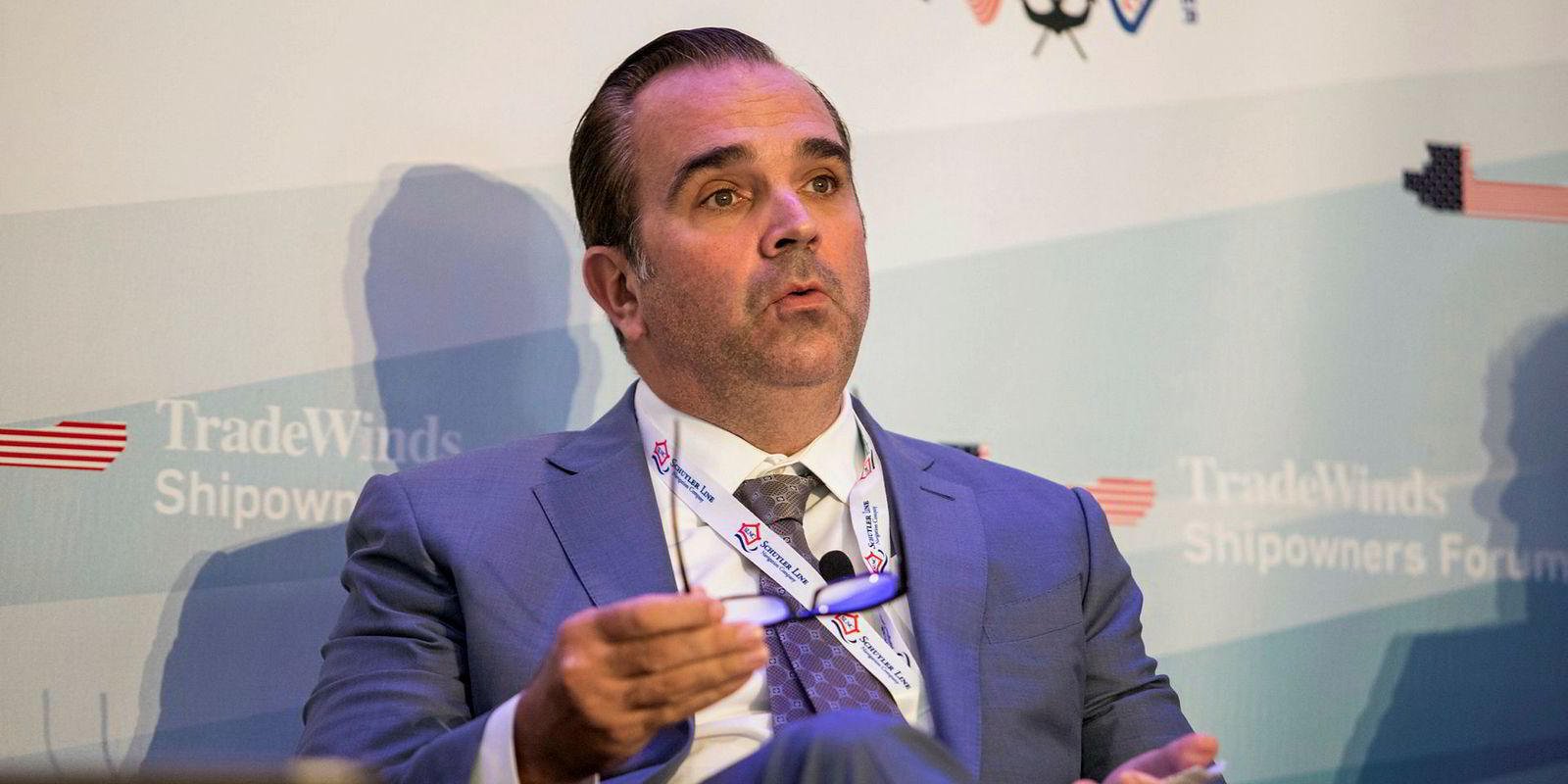Tanker owners in the US Jones Act market are optimistic that they have bounced off the bottom of the market and are in the early stages of a rates recovery.
Speaking at TradeWinds Shipowners Forum USA in Houston, owners said a culling of surplus tonnage has been ongoing for the past two years while the demand picture remains encouraging.
Overseas Shipholding Group (OSG) chief executive Samuel Norton said as rates improve companies should be less dependent on spot bookings and should be able to return to the traditional charter-cover relationship with energy companies.
We’ve fixed a number of vessels on period charters of one to two years at rates that we find profitable, and that was not the case 12 or 18 months ago
Samuel Norton
The leverage in that relationship had shifted to charterers in 2015, he said, when 25 vessels constructed from 2010 to meet a supposed tonnage shortage for coast-wise shale oil cargoes met a market shock: the US government decision to allow crude exports.
Uber effect
The sudden oversupply brought oil companies “the Uberisation of tankers — where you could call up and get whatever you wanted at any time”.
Norton said as recently as January that OSG was holding back from spot employment of its 20 tankers and articulated tug barges (ATBs) from charter employment at loss-making rates in the belief that the market would soon rise.
That has been borne out, at least partially, in the past eight months.
“We’ve fixed a number of vessels on period charters of one to two years at rates that we find profitable, and that was not the case 12 or 18 months ago,” Norton said.
“We see a general movement of spot tanker rates from the mid- $20,000s [per day] to the upper-$60,000s [per day], and in the time-charter rates we’ve seen lows in second half of 2017 go from the mid-$30,000s to recent fixtures in the period market that have been solidly in the mid-$50,000s.
“That’s healthy progress for us. And something that has occurred because we did take a very pronounced position not to fix our ships at rates we thought were money-losing.”
While most of the shale-generated US crude is being exported, an incremental amount is moving from the US Gulf to east coast refineries when market dynamics make it more cost effective than European imports, he noted.
“At the margins, it’s been the crude transportation demand that’s been affecting much of the dynamic in terms of the pace of the recovery,” Norton said.
Tanker owners on a subsequent Jones Act panel generally agreed with Norton’s take, saying they were at least breaking even on current fixtures and optimistic about better numbers in the near term.

I think it would be hard today to find a shipping sector that has a better supply-demand dynamic if you look a few years out
Pal Lothe Magnussen
Echoing Norton’s comment on crude movements, American Shipping Co chief executive Pal Lothe Magnussen said there had been 14 voyages from the Gulf to east coast refineries in September — the most since 2014.
“It’s going to be very interesting to follow that trade going forward to see if it can be sustained at that level or even grow,” he said.
Bullish on supply
But Magnussen, who bareboat charters 10 product tankers to OSG on terms ending in December, was even more bullish on the supply side.
“We’re very optimistic on the medium-term outlook,” he said. “I think it would be hard today to find a shipping sector that has a better supply-demand dynamic if you look a few years out.
“The reason for that is that the orderbook is basically non-existent. There’s a couple of ATBs coming over the next two years. There’s no MRs in the orderbook.”
Only Aker Philadelphia Shipyard and San Diego’s Nassco are capable of building Jones Act product tankers and neither is likely to turn out many over the next five years, he argued.
“At the same time you have a number of really old ships — 35 years and older — that will have to go through a special survey that will be really costly. And you take into account that there are ballast-water treatment systems that need to be installed as well.”
Seacor Ocean Transport president Daniel Thorogood also touted the supply equation.
“The Jones Act tanker market is made up of approximately 100 vessels,” he noted. “And there’s a dozen or so that still need to be removed from service that are either at or very close to the end of their lives. That’s a significant swing in term of available capacity.”
Crowley Shipping general manager Robert Grune was cautiously optimistic.
“Our rates are compensatory,” he said. “We obviously would love to see it go higher. But based on the oil prices we’re seeing today, we’re relatively optimistic that we’ve seen the bottom and we’re going to see a little bit of a creep up.”





